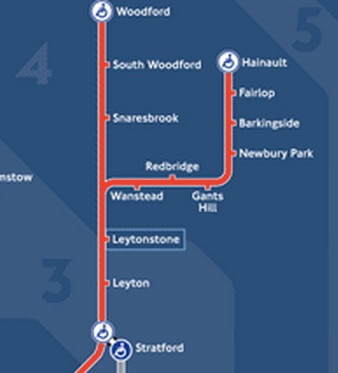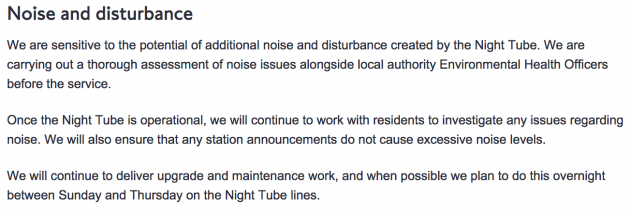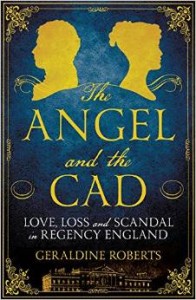 The Angel and the Cad is a heartbreaking tale of loss and betrayal told in gripping style by Wanstead author and historian Geraldine Roberts. The book, just published, tells of the doomed marriage of Catherine Tylney Long (who had inherited the magnificent Wanstead House) and William Wellesley Pole. This excerpt describes what may have been one of the biggest parties Wanstead ever saw.
The Angel and the Cad is a heartbreaking tale of loss and betrayal told in gripping style by Wanstead author and historian Geraldine Roberts. The book, just published, tells of the doomed marriage of Catherine Tylney Long (who had inherited the magnificent Wanstead House) and William Wellesley Pole. This excerpt describes what may have been one of the biggest parties Wanstead ever saw.

Refurbishments at Wanstead House were progressing well enough for Catherine to host a ‘splendid déjeune’ on Wednesday 10 July 1811, a fete lasting all day and night with dancing and entertainment continuing into the early hours. It was an opportunity to prove herself to her new London circle and to show off her magnificent home. Guests began arriving at two o’clock, carriages rattling through the stone gateposts just when the house and gardens were at their most glorious, bathed in afternoon sunlight. Entering the park, visitors admired the aspect of the house in the distance, standing on high ground with lawns sloping gently down to the octagonal lake. The approach provided delights at every turn: Sir Josiah’s stately avenue of elms, the steeple of St Mary’s Church and perfectly manicured gardens. Alighting on the elevated terrace, London’s finest gazed in awe at their surroundings: the elegant sweep of the house, the majestic portico with soaring Corinthian columns, plus the beautiful prospect of the river with lakes, walks and wildernesses beyond. As Catherine stood in the portico greeting her guests, radiantly beautiful, framed by the backdrop of her magnificent Palladian palace, it was easy to see why her allure might be overwhelming.
The Royal Dukes of Clarence, Cumberland and Cambridge arrived at about four o’clock, and dancing commenced soon after on temporary platforms erected on the lawns. German waltzes graced one platform, while Mr Gow’s famous orchestra played reels in a tent some distance away and the Duke of York’s military band entertained in another area. Those who did not wish to dance promenaded through the pleasure grounds or took a guided tour of the house, passing through twenty staterooms sumptuously furnished with paintings and artwork. Déjeune was served around six o’clock, with Catherine seated in the Great Hall amongst her most distinguished guests. No expense was spared, with food provided by London’s most renowned caterer:
The company sat down, to partake of the delicacies of the season, provided by Mr Gunter, the celebrated confectioner . . . At the banquet there were seven hundred eighty-two dishes of roast and boiled; and five hundred baskets of fruit . . . Soups – turtle, vegetable and pea. Roasts – venison, pheasants, chicken, lamb, veal. Boiled – tongue, ham, prawns, lobsters and crayfish. To this it may be added, jellies, ice-creams, chantellias, and whip cream, crepes, pastries, [etc.]
Dancing recommenced in the ballroom and went on until two o’clock in the morning, when a second banquet was served, equally as costly as the first, and guests did not disperse until dawn. Newspapers reported over the course of several days, as snippets of gossip emerged. On 14 July, the Morning Post highlighted the frenzy surrounding Catherine, describing how villagers attempted to catch a glimpse of the proceedings: ‘A strong party of the police preserved order . . . upwards of ten thousand people . . . were standing over every barrier, and up every tree to gratify a more eager curiosity than we ever before witnessed on any similar occasion.’ On 15 July, the Morning Post reported that the fete excited such interest in the fashionable world that there were more than six hundred gate-crashes. Some turned up claiming to be related to dukes, while others ‘that had invitations, brought three and four persons with them, and as they were of titled distinction, Lady Catherine knew not how to refuse them’. As a result, the food was adequate but not plentiful because around 1,200 people sat down for the banquet, instead of the expected 550.
You can buy The Angel and the Cad from Amazon here.. Geraldine Roberts will be holding a launch for the book at Wanstead Library on Friday 3 July at 7pm at Wanstead Library, courtesy of Newham Bookshop. Tickets are £5 either from the library or on 020 8708 7400 or 020 8552 9993
 Transport for London has now published its map of Tubes which will run all night on Fridays and Saturdays from 12 September. It’s a great thing for London’s economy, and also for anyone who wants to come home from a night out.
Transport for London has now published its map of Tubes which will run all night on Fridays and Saturdays from 12 September. It’s a great thing for London’s economy, and also for anyone who wants to come home from a night out.

 We’re not going to make a habit of this, but to anyone wondering if Wanstead would make an appearance in Anya Lipska’s new novel,
We’re not going to make a habit of this, but to anyone wondering if Wanstead would make an appearance in Anya Lipska’s new novel,  He told Wansteadium: “I had me boy with me and a bulldozer came perilously close so I scooped him up and out the way. He was about two or three and had a red duffle coat so he looked like a little Santa gonk. Bloke from The Guardian (prob Waltham Forest) took a picture and I’m told it ended up on the front page. You’d think I’d have it but I’m a shit Dad. That’s all I remember apart from being dead good looking with long hair at the time.”
He told Wansteadium: “I had me boy with me and a bulldozer came perilously close so I scooped him up and out the way. He was about two or three and had a red duffle coat so he looked like a little Santa gonk. Bloke from The Guardian (prob Waltham Forest) took a picture and I’m told it ended up on the front page. You’d think I’d have it but I’m a shit Dad. That’s all I remember apart from being dead good looking with long hair at the time.”


 The book is dubbed “Love, Loss and Scandal in Regency Englandâ€, but for many Wanstead readers the intrigue and the scandal will be overshadowed by a sense of loss. It’s the tale of the disastrous marriage and betrayal of Catherine Tylney Long by William Wellesley Pole, which resulted in the plundering of family treasures held in her Wanstead House mansion – all to pay the debts of his high living. And of course, the fact that there is nothing left of the mansion except a bunker near the 18th hole at Wanstead Golf Course, the result also included the destruction of the house to be sold for timber and stone.
The book is dubbed “Love, Loss and Scandal in Regency Englandâ€, but for many Wanstead readers the intrigue and the scandal will be overshadowed by a sense of loss. It’s the tale of the disastrous marriage and betrayal of Catherine Tylney Long by William Wellesley Pole, which resulted in the plundering of family treasures held in her Wanstead House mansion – all to pay the debts of his high living. And of course, the fact that there is nothing left of the mansion except a bunker near the 18th hole at Wanstead Golf Course, the result also included the destruction of the house to be sold for timber and stone.